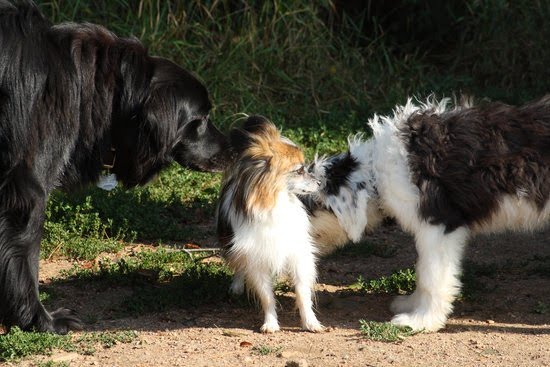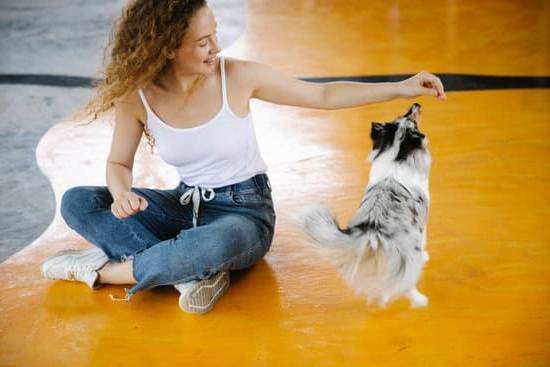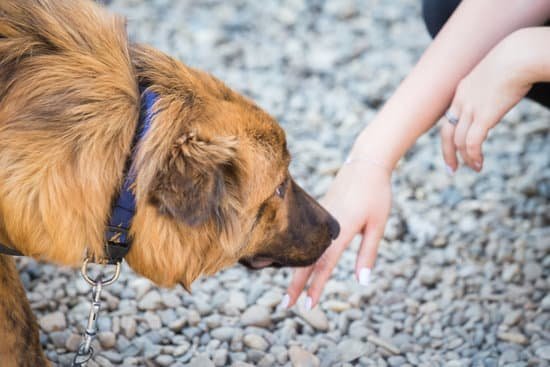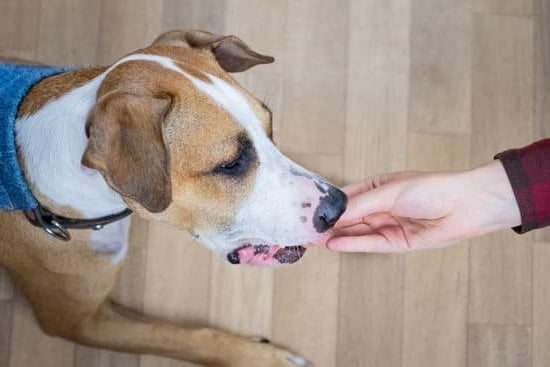Introduction
When a dog gets pushy about wanting treats during training, it is important to recognize that this is not simply a misbehavior problem. The pushy behavior is likely due to the dog’s natural instincts to display dominance and receive rewards. As such, it may require more than just regular obedience commands or “correction” as a means of addressing the issue.
To start, it can be helpful to understand why the dog might be displaying such behaviors. Generally speaking, dogs may act out in an attempt to acquire rewards like food or toys if they do not feel they are getting enough attention. The pushiness might also be a result of misplaced excitement because of their eagerness for your approval and recognition.
It’s also important to remember that these “pushy” behaviors should not be viewed as malicious but instead as normal canine behavior caused by instinct and/or boredom. With this understanding, owners can then take steps to ensure that their pup is getting the necessary reinforcement and attention so that the incorrect behaviors do not become ingrained habits.
The Benefits of Setting Boundaries for Treats
Setting boundaries for treats is important when training your dog. It prevents them from becoming overly pushy and demanding when it comes to wanting treats during training. This can be very beneficial in a few ways. Firstly, it teaches your dog that rewards are not given out all the time, but instead need to be earned through following commands correctly. Secondly, it encourages them to be more attentive and focused on their behavior during the training session which makes learning easier and faster. Finally, it allows you to have control over how many treats are given out each session and helps the training process become more organized. Establishing these boundaries when teaching a dog helps to ensure a successful outcome in terms of learning and obedience while also preventing any potential behavioral problems that can come along with giving out too many treats at once.
Recognizing Pushy Behaviors During Training
When a dog gets pushy about wanting treats during training, it can be disconcerting or even intimidating. A pushy dog may display behaviours such as pawing, barking, standing in one’s way, or even biting in an effort to get their desired treats. While this type of behavior is not necessarily abnormal for a hungry pup who is eager for rewards during training sessions, it does need to be addressed and managed properly. In order to avoid any accidents and ensure the safety of everyone involved, dog owners must understand how to recognize and manage these pushy behaviors.
In order to discourage these undesirable actions, owners should pay close attention to their pet’s body language and facial expressions before offering a treat. Is your pooch showing signs of anxiety or stress? If so, take a step back and give them some space before considering providing them with food rewards. Additionally, owners should keep calm and use positive reinforcement while working on basic commands with their pet. This means rewarding good behaviors with praise instead of treats right away as this will help build trust between owner and Fido over time. Lastly, if pushy behaviors persist despite these steps being taken, adding distance between you and the pup during training can send the message that those behaviors are not acceptable.
Tips for Responding When a Dog Gets Pushy
It can be difficult to deal with a pushy dog while they are trying to get treats during training. Here are some tips for responding when a dog gets pushy:
1. Be consistent with your expectations. Dogs should understand that pushing and beg for treats is not acceptable behavior. In order for them to learn this, all family members and other people who interact with the dog need to react the same way whenever pushing occurs. This reinforces the idea that pushing is frowned upon no matter who is present in the household or situation.
2. Distract your pup by redirecting their attention away from food or treats using toys or games – playing catch, tug of war and treat puzzles are good examples of activities you can use as alternatives to begging for treats during training sessions.
3. Offer rewards after calm behavior instead of handing out rewards while they are behaving aggressively, which only reinforces negative behaviors. This helps reinforce positive behavior over time as your pup learns that good things come after remaining calm rather than pushing or jumping around excitedly for treats.
4. Don’t give into temptation by giving them a treat if they push or beg for one. Temptation can weaken our resolve when it comes to setting boundaries, but keep in mind that one instance of giving in could reinforce poor behavior and create bad habits your pup won’t give up easily later on!
Efforts That Help Combat Treat Pushiness
When a dog gets too pushy about wanting treats during training, it can be difficult to get them to comply or listen to commands. It is important for dog owners to step in and gently correct behavior to teach their pup that pushing for treats isn’t acceptable. Some ways to do this include verbal No commands, distractions such as holding up an interesting toy or providing praise and positive reinforcement when good behavior is shown. If the dog persists, walking away from the situation may be necessary until the pup calms down before continuing the training session. Additionally, setting rules around when treats are given and always sticking with those predetermined expectations can also create structure and consistency in your relationship with your pet. Training should also focus on rewarding behaviors you like rather than punishing ones you don’t –if a pup is being particularly pushy it might be best not to give in because this could result in them expecting rewards each time they display that same behavior. Creating reinforcements with toys or playtime instead of food will help strengthen the bond between pet and owner as well as train a pup that rewards come from good behavior.
Managing Pushy Behaviors
When a dog gets pushy in its attempts to receive treats during training, it can become disruptive and even dangerous. However, this doesn’t mean that the dog needs discipline to control such behavior. Instead, understanding why the dog is acting out like this and finding ways to manage pushy behaviors during training sessions can be incredibly helpful in creating a positive learning environment.
One way of managing pushiness is to introduce distracting objects or activities while giving treats so that attention and focus on getting treats is reduced. This can include offering interactive puzzles like Kongs that dispense food or moving around with the dog. Other strategies involve completely ignoring the pushy behavior and rewarding desired behaviors with treats instead, teaching “go away” and “leave it” cues in order to avoid table-scraps jumping up and even using vocal sounds such as a “hmmmm” noise when being overly persistent and calm reinforcement such as petting when the dog stops pushing.
It’s important to remember not to get too frustrated or angry at your pet for exhibiting pushy behavior during training, as this could result in more negative behaviors from both the dog and its owners. Instead, by focusing on reinforcing desired behaviors with clear rewards and patiently teaching alternative ones without punishing unwanted behaviors, you can eventually successfully modify pushy traits into polite mannerisms that work better for both owner and pup!
Conclusion
When a dog has learned to associate treats with positive reinforcement during training, it can be tempting for them to become pushy when they want more. This behavior needs to be carefully managed, as an overly pushy dog can interfere with training. To minimize the occurrence of pushiness, it is important to create a system that allows the dog to succeed while still reinforcing appropriate behavior.
A system that gives your dog clear instructions and expectations is essential in maintaining successful training. Vocal commands such as “no” or “sit” can help clearly communicate what behavior is expected. Additionally, providing intermittent responses both entices the dog to keep trying and prevents them from becoming over-excited by prospects of food rewards. Additionally, setting boundaries in regards to physical contact can help ensure that your dog is not attempting to manipulate you for treats. For example, you might only allow treats when your hand is held four inches away from their mouth.
By setting up an effective system for providing treats during training sessions with your pup, you will find it much easier to curb your dog’s pushy behavior as well promoting respectful and cooperative interactions between you and your pet!

Welcome to the blog! I am a professional dog trainer and have been working with dogs for many years. In this blog, I will be discussing various topics related to dog training, including tips, tricks, and advice. I hope you find this information helpful and informative. Thanks for reading!





